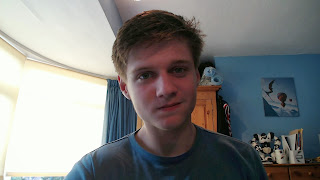Protagonist:
18 year old male; average middle class white boy
Comes across as your average guy mixed up in a crime; appears guilty and concerned about what he has done
18 year old male; average middle class white boy
Comes across as your average guy mixed up in a crime; appears guilty and concerned about what he has done
Runs away from crime; shows lack of responsibility which is typical of teenagers
Actor- Matt
Similar characterisation to Freddie from Skins in that he is an average teenage boy who shows emotion towards situation for example his girlfriend, however he often ends up in troublesome situations.
Protagonist's Girlfriend:
Protagonist's Girlfriend:
18 year old female; average middle class white girl
Inquisition about boy's whereabouts shows she cares and worries about boyfriend
Actress- Georgie
- Flash forward to middle of film
- Boy running away from something; audience does not know it's a crime yet
- Fast paced running sequence
- Frantically knocks on girlfriend's door before pushing his way in
- Does not respond to her questions and continues to panic
- Reveals that he has been involved in crime, injuring girl's brother
- We hear a knock on the door; leaves audience in suspense
Setting
Typical urban London streets; Walthamstow
Middle class family house for girlfriend's house










